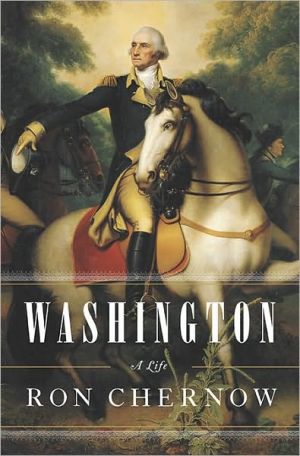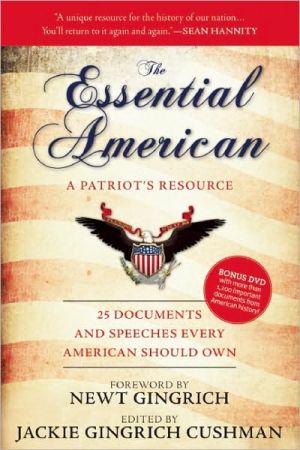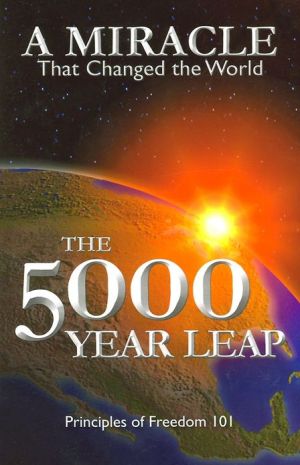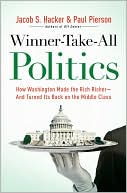The Majesty of the Law: Reflections of a Supreme Court Justice
In The Majesty of the Law, Supreme Court Justice Sandra Day O'Connor explores the law, her life as a Justice, and how the Court has evolved and continues to function, grow, and change as an American institution. Tracing some of the origins of American law through history, people, and ideas, O'Connor sheds new light on the basics, and through personal observation she explores the development of institutions and ideas we have come to regard as fundamental.\ O'Connor discusses notable cases that...
Search in google:
In The Majesty of the Law, Supreme Court Justice Sandra Day O'Connor explores the law, her life as a Justice, and how the Court has evolved and continues to function, grow, and change as an American institution. Tracing some of the origins of American law through history, people, and ideas, O'Connor sheds new light on the basics, and through personal observation she explores the development of institutions and ideas we have come to regard as fundamental. O'Connor discusses notable cases that have shaped American democracy and the Court as we know it today, and she traces the turbulent battle women have fought for a place in our nation's legal system since America's inception. Straight-talking, clear-eyed, inspiring, The Majesty of the Law is more than a reflection on O'Connor's own experiences as the first female Justice of the Supreme Court; it also contains a discussion of how the suffrage movement changed the lives of women-in voting booths, jury boxes, and homes across the country. In The Majesty of the Law, Sandra Day O'Connor reveals some of what she has learned and believes about American law and life, insights gleaned over her years as one of the most powerful and inspiring women in American history. About the AuthorSandra Day O'Connor was born in El Paso, Texas, and raised on the Lazy B, a ranch on the Arizona-New Mexico border. She attended college and law school at Stanford University, and began her public service in Phoenix, Arizona. She has been married to John O'Connor since 1952, and they have three sons. She is the author, with her brother, H. Alan Day, of Lazy B, a memoir about growing up in the American Southwest. Nominated by President Reagan as Associate Justice of the Supreme Court of the United States, she took the oath of office on September 25, 1981, the first woman to do so. Craig Joyce, editor, is Law Foundation Professor at the University of Houston Law Center, where he currently serves as codirector of the Institute for Intellectual Property and Information Law. The Washington Post O'Connor is most compelling in the essays that shed light on the sorts of influences that affect her as a judge: how her experiences as a state legislator in Arizona have informed her feelings about states' rights or how her inability to get anything other than a legal secretary's job despite excellent grades at Stanford Law School colors her view of discrimination cases. While she acknowledges that her role is limited to interpreting the law, her essay on Thurgood Marshall is one of the most telling chapters of the book. Here she admits to being moved by his storytelling and profoundly influenced by his struggles with racism and his compassion for the downtrodden. This quality in O'Connor -- a willingness to look beyond black-letter law and express sympathy for the weak -- is something one sometimes witnesses at oral argument. — Dahlia Lithwick
CHAPTER ONE\ What's It Like?\ What is it like working at the supreme court?\ Because I never dreamed that I would end up where I am, I had no preconceived ideas about the job upon arriving for work the first day. I had not been admitted to practice before the Court. The first argument I ever witnessed in the Supreme Court was one that I considered as a member of the Court justice. My guess is that such experiences were not uncommon for new Justices, at least until more recent years.\ All I knew was that the job would be a tremendous undertaking. I had no specific ideas about the mechanics of being a Justice, however, or what the decision-making process on the Court was really like. I hoped that I had the basic ability and could develop the skills not only to do the job but to do it well in order that not only women but most citizens would think that the President had made a good choice.\ There is one custom we have on the Court that was a pleasant surprise to me and that I treasure. Each day when there is oral argument, just before we go out on the bench, and each day before we confer, every Justice shakes the hand of every other Justice. To an outsider, this may seem baroque and unnecessary, but you must realize we are a very small group. We see and interact with one another often, and we all know we will continue to do so for the rest of our professional lives. It is important that we get along together so we can go along together.\ The one-page memo and the color-coded distribution sheet have yet to reach the Supreme Court. Indeed, the Court is a more reliable backstop for the health of the paper industry than any protectionist legislation Congress might pass. A Justice is by protocol allowed to make a grocery list without making eight copies to distribute around the Court, but pretty much everything else is done not only on paper but with copies for every other Justice to read as well.\ Petitions asking the Court to grant review of a case come to us throughout the year from both the federal and the state court systems. And they come in significant numbers. We now receive more than seven thousand applications a year. Many call but few are chosen; the Court accepts for full review with briefing and oral argument no more than one hundred or so cases for each year's term. In addition, the Court summarily decides up to another hundred or so cases without oral argument and full briefing. In making this drastic culling, the Court has relatively few hard and fast rules to guide or restrict its decisions.\ We follow an unwritten policy that it takes the agreement of at least four Justices to accept a case. With each petition we consider the importance of the issue, how likely it is to recur in various courts around the country, and the extent to which other courts considering the issue have reached conflicting holdings on it.\ My own evaluation of the applications is based on what I believe to be the primary role of the Court: with fifty separate state-court systems and thirteen federal circuits, our task is to try to develop a reasonably uniform and consistent body of federal law. Petitions seeking full-scale review in cases posing a genuine conflict among the lower courts on an important issue of federal law obviously are much more likely to garner the required number of votes to grant the petition than are petitions in cases where the lower courts are generally in agreement on the legal issue in the case.\ Each year the members of the Court must read the briefs in the one hundred or so cases on which the Court hears oral arguments. After argument, each case has to be decided and explained in a published opinion.\ During the weeks of oral arguments The Justices confer after the arguments are heard. This is where we learn how each Justice thinks the case should be resolved and why. Based on this discussion, writing assignments are made for the case. If the Chief Justice is in the majority on a case, he assigns the writing of the Court's opinion to one of the Justices in the majority or to himself. If not, the most senior justice in the majority makes the assignment. Likewise, if a dissent is to be written and joined by more than one Justice, the most senior Justice planning to join that dissent assigns the writing.\ The writer of the majority opinion must try to reconcile the views of those in the majority. When the opinion draft is circulated, each Justice reads it and decides whether to join it or to ask for revisions as a condition of joining. Sometimes a Justice will write a concurring opinion subscribing to the result in the majority opinion but based on different reasons, which it provides. If there is a dissenting view, that too is written up and circulated to all the Justices. In the end the opinion for the Court may be the result of many drafts and changes. Eventually, each participating Justice will have agreed to one or more of the opinions in the case. Each term produces something like five thousand pages' worth of opinions in the United States Reports. It all adds up to a lot of paper.\ Serving on the Court has provided me with a number of pleasant surprises. Some people think that the Court is full of bitter battles, and it is true that the Court's opinions sometimes include strong language. But in fact one of my earliest and most rewarding experiences on the Court, and one that I did not fully anticipate, was of the warmth, kindness, and civility of my fellow Justices. Every one of my colleagues has been very thoughtful and considerate. There have been times with some previous Courts when some members did not get along and when some animosity persisted among certain Justices. Happily, that has not been the situation during my time here. It is a particular pleasure to be able to serve in an atmosphere of respect and affection for one's colleagues.\ What is quite remarkable in my view is that each and every petition for review, whether produced by a sophisticated lawyer in a high-rise or handwritten by a prison inmate or a private citizen in her home, is reviewed with care by each Justice. And every written opinion of the Court is read with utmost care and attention by every other Justice, with an eye toward refinement or improvement. The process we follow, I think, provides some reason to have faith in the nation's judicial system.\ Of course, not everyone is happy with the Court's decision in any given case. After all, you have two sides only one can win. And often that unhappy party is the court below, because the Supreme Court reverses about two thirds of the lower-court decisions in those cases it reviews.\ When I am not hearing oral arguments, researching and considering the law, or discussing the cases with my colleagues or my clerks, part of my time is spent dealing with a mass of correspondence. Some relates to pending cases. I ignore all such letters. Many letters are from schoolchildren who want information from me or about me. I do the best I can to process and answer these.\ People often think of the Supreme Court as a remote Washington institution. State and local judges are forced by proximity to stay in touch with the concerns of those they serve. The Supreme Court, in contrast, serves a national purpose for a vast country. One might wonder, therefore, if the Court is simply a large, federal institution, distant and out of touch with the people. But in fact the Court is not a bad place from which to get some sense of the nation's concerns, or at least its national legal concerns. The more than seven thousand petitions for review each year come from all across the country and involve a very wide range of legal issues. The Court hears oral argument in cases that have their genesis in front-page actions by Congress as well as in the actions of police officers in tiny towns. The attorneys who appear before the Court, and the clients whose problems have brought them there, present a similarly broad geographical cross section.\ Justices are drawn from all over the country and are a diverse group. This, in my view, is another reason to be optimistic about the Court. Diversity is its strength, just as it is the strength of America itself. In my twenty plus years on the Court, I have learned at least one lesson very vividly. A Justice is constantly called upon to try to draw some harmony from that diversity-and even to reconcile the irreconcilable.\ E. B. White said, "Democracy is based on the recurrent suspicion that more than half of the people are right more than half of the time."1 In the narrow view, the Supreme Court is based on the suspicion that five Justices are similarly correct. In the broader view, I think that the Justices contribute to the wider democracy. We struggle with national issues and attempt to define from a national perspective what it is that the federal laws and the Constitution say. If you don't agree with all of the Court's holdings, you are certainly not alone. But you may be confident that we never stop trying in our writings on every case on our agenda to contribute appropriately to the fragile balances of our national democracy.\ From the Hardcover edition.
\ The New York TimesNot surprisingly, O'Connor is at her most frank and most interesting when she addresses her status as the first woman to serve on the court. What difference has it made to the institution? Her answer is somewhat equivocal. ''My intuition and my experience persuade me that having women on the bench, and in other positions of prominence, is extremely important.'' She adds that until the percentage of women in important office, including the court, comes ''closer to 50 percent, we cannot say we have succeeded'': success would matter not because women bring a different view to judging, or legislating (she served in the Arizona legislature before becoming a state court judge). Only stereotypes, she argues, prevent women from achieving parity, a view borne of her own experience 50 years ago, when the only job a law firm offered her, after she made a distinguished record at Stanford Law School, was as a legal secretary. — Dennis J. Hutchinson\ \ \ \ \ The Washington PostO'Connor is most compelling in the essays that shed light on the sorts of influences that affect her as a judge: how her experiences as a state legislator in Arizona have informed her feelings about states' rights or how her inability to get anything other than a legal secretary's job despite excellent grades at Stanford Law School colors her view of discrimination cases. While she acknowledges that her role is limited to interpreting the law, her essay on Thurgood Marshall is one of the most telling chapters of the book. Here she admits to being moved by his storytelling and profoundly influenced by his struggles with racism and his compassion for the downtrodden. This quality in O'Connor -- a willingness to look beyond black-letter law and express sympathy for the weak -- is something one sometimes witnesses at oral argument. — Dahlia Lithwick\ \ \ Dennis J. HutchinsonNot surprisingly, O'Connor is at her most frank and most interesting when she addresses her status as the first woman to serve on the court. What difference has it made to the institution? Her answer is somewhat equivocal. ''My intuition and my experience persuade me that having women on the bench, and in other positions of prominence, is extremely important.'' She adds that until the percentage of women in important office, including the court, comes ''closer to 50 percent, we cannot say we have succeeded'': success would matter not because women bring a different view to judging, or legislating (she served in the Arizona legislature before becoming a state court judge). Only stereotypes, she argues, prevent women from achieving parity, a view borne of her own experience 50 years ago, when the only job a law firm offered her, after she made a distinguished record at Stanford Law School, was as a legal secretary.\ — The New York Times\ \ \ \ \ Dahlia LithwickO'Connor is most compelling in the essays that shed light on the sorts of influences that affect her as a judge: how her experiences as a state legislator in Arizona have informed her feelings about states' rights or how her inability to get anything other than a legal secretary's job despite excellent grades at Stanford Law School colors her view of discrimination cases. While she acknowledges that her role is limited to interpreting the law, her essay on Thurgood Marshall is one of the most telling chapters of the book. Here she admits to being moved by his storytelling and profoundly influenced by his struggles with racism and his compassion for the downtrodden. This quality in O'Connor -- a willingness to look beyond black-letter law and express sympathy for the weak -- is something one sometimes witnesses at oral argument.\ — The Washington Post \ \ \ \ \ James F. SimonIn The Majesty of the Law, Justice Sandra Day O'Connor has blended personal reflections with key professional insights to give us a richly textured account of the fascinating history, current status, and hopeful future of the rule of law. The fact that the author is destined to take her place among the most influential Justices to serve on the modern U.S. Supreme Court makes this important book all the more significant.\ —Martin Professor of Law at New York Law School and author of What Kind of Nation: Thomas Jefferson, John Marshall, and the Epic Struggle to Create a United States\ \ \ \ \ Gordon S. WoodA marvelous collection of wide-ranging and plainspoken ruminations on the Constitution, constitutionalism, and the Supreme Court by the Court's first female Justice. Justice O'Connor's keen-wittedness, honesty, and common sense are revealed throughout. Although she eloquently reveals the majesty of the law, she also brings that majesty down to earth and makes it intelligible to all of us. It is her special genius.\ —Alva O. Way University Professor and professor of history at Brown University, author of The American Revolution: A History\ \ \ \ \ Nan KeohaneJustice O'Connor's newest book will intrigue and enlighten many different readers. She discusses multiple issues, including what it's like to be on the Supreme Court, how and by whom the Court has been shaped, and the meaning of the rule of law. Her reflections on women in the law, and women in power, are especially thought-provoking. No one is better qualified than she to write about these issues, and she does so with her customary wit and clarity.\ —president, Duke University\ \ \ \ \ Michael BeschlossWith this important book, one of the most intriguing figures in American history reveals her private musings about history, the law, and her own life-both public and personal. The Majesty of the Law shows us why Sandra Day O'Connor is so compelling as a human being and so vital as a public thinker.\ —author of The Conquerors: Roosevelt, Truman and the Destruction of Hitler's Germany, 1941-1945\ \ \ \ \ Publishers WeeklyO'Connor, veteran associate justice of the U.S. Supreme Court, distills in this book the scores of talks she has given across the country and around the world in the 20 years since her accession to the high court. O'Connor, the author of the bestselling memoir Lazy B, is an enthusiast of the American legal system, reaching back to its origins in the Magna Carta and, later, in the English Privy Council, with its power to invalidate legislation. Declaring federal and state laws unconstitutional, of course, is the core of the Supreme Court's authority over this country's legal system, and O'Connor traces the exercise of that authority from the era of Chief Justice John Marshall to Brown v. Board of Education. In other chapters, O'Connor profiles Supreme Court titans such as Holmes and Taft, and reviews the long struggle to gain for women the right to vote. Elsewhere, the author suggests reforms for the jury system, extols the benefits of an independent judiciary and offers a graceful tribute to Justice Thurgood Marshall. Canons of ethics prohibit judges from public comment on controversial matters likely to arise in their future cases, and a Supreme Court justice cannot reveal the dynamics of the Court's deliberations. These rules of discretion pervade O'Connor's book. Divisive (and provocative) issues such as abortion, the death penalty or affirmative action are addressed only in the broadest possible generalities. Purged of controversy, O'Connor's book is an engagingly written civics lesson, delivering a warm appreciation of legal history and principles but little light on the issues the Supreme Court confronts today. (Apr.) Copyright 2003 Reed Business Information.\ \ \ \ \ Library JournalO'Connor gets down to the nitty-gritty of her profession. Copyright 2002 Cahners Business Information.\ \ \ \ \ School Library JournalAdult/High School-Justice O'Connor gives a history of the U.S. judicial system with an emphasis on how the Supreme Court evolved into its present form. For students only dimly aware of the court through a basic civics class and the occasional sensational case highlighted by the media, this title will prove to be enlightening. The book takes on a conversational tone, and it's easy to imagine oneself in a university lecture hall with O'Connor as the (usually) fascinating professor who has her feet firmly planted in the real world. To get the most out of the book, it should be read cover to cover. However, it is also useful for readers who wish commentary on particular aspects of the Supreme Court, historical cases, or personalities. The tone is even, and O'Connor has a kind and often complimentary attitude toward fellow justices past and present. High points are her experiences working with Justice Thurgood Marshall, and her thoughts on women and the law. As a bonus, she includes a glimpse into her views on judicial systems of countries that are undergoing their own painful evolutions, such as the former Soviet bloc. All in all, this is a good book for readers who would like a personable introduction to one of our nation's most powerful institutions.-Sheila Shoup, Fairfax County Public Library, VA Copyright 2003 Reed Business Information.\ \ \ \ \ Kirkus ReviewsAn informative, behind-the-scenes view of daily life at the tallest bench in the land. One of the most ingenious points of American democracy, writes Justice O’Connor (Lazy B, 2001), is its according "dual sovereignty" to the national and state governments; it is also one of its thorniest aspects, a source of constant conflict. Hence, the Supreme Court, which, since the days of John Marshall, has reserved for itself the power to determine whether a given law falls within the bounds of the Constitution. Justice O’Connor looks at a few of the signal cases the Court has heard in the last half-century, such as Brown v. Board of Education; profiles predecessors and colleagues like Thurgood Marshall and Warren Burger; holds forth on practical problems, e.g., jury duty ("It is incumbent upon those who oversee their jury systems to make sure that jury service, for whatever length of time, is bearable"); and exalts the better angels of American democracy, however fragile, witness the principle "that certain fundamental rights, to which every citizen is entitled, mist be placed outside the reach of political exigency." Throughout, Justice O’Connor writes with lively humor; considering the mounds of paper that cross her desk: for instance, "The Court is a more reliable backstop for the health of the paper industry than any protectionist legislation Congress might pass." Humor aside, and despite her conservative leanings, she also writes with a sharp sense of appreciation for dissenting views, and she is keenly appreciative of the growing role of women in political decision-making, arguing that "society as a whole can benefit immeasurably from a climate in which all persons, regardless of gender,have the opportunity to earn respect, responsibility, advancement, and remuneration based on ability." An able primer on the role of the Supreme Court in American life, and on the merits--and shortcomings--of American democracy.\ \








